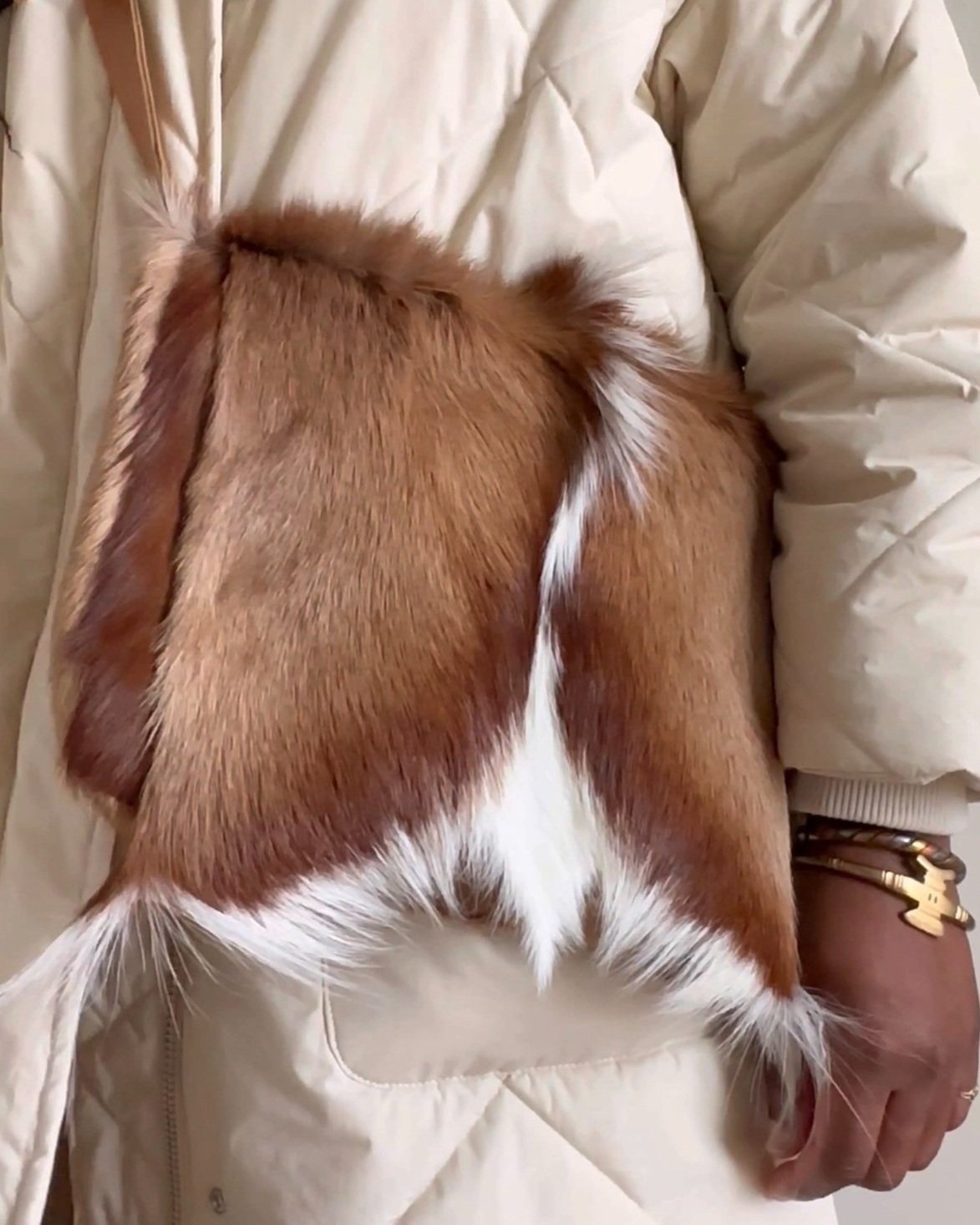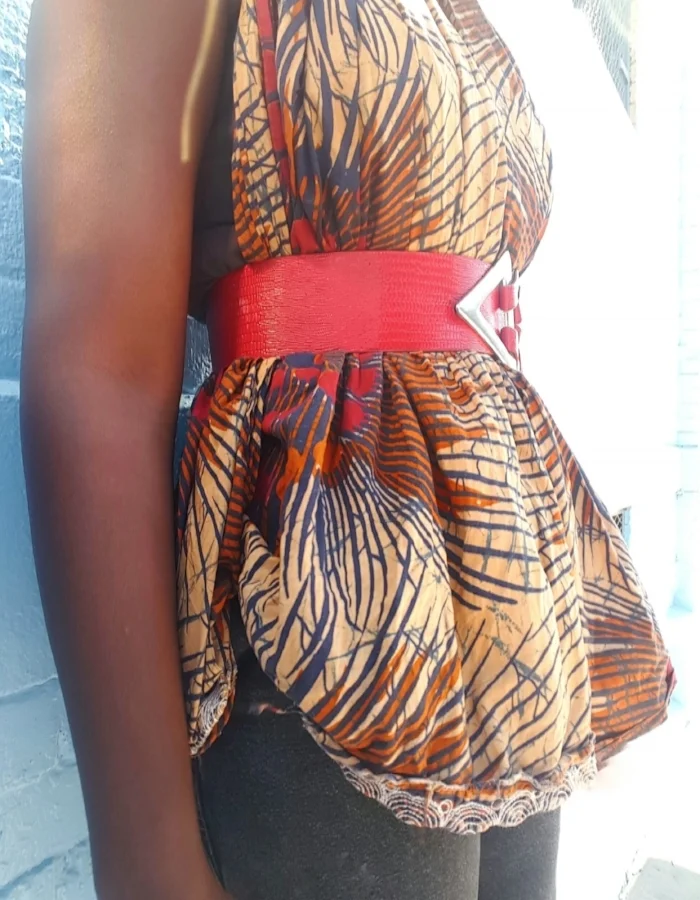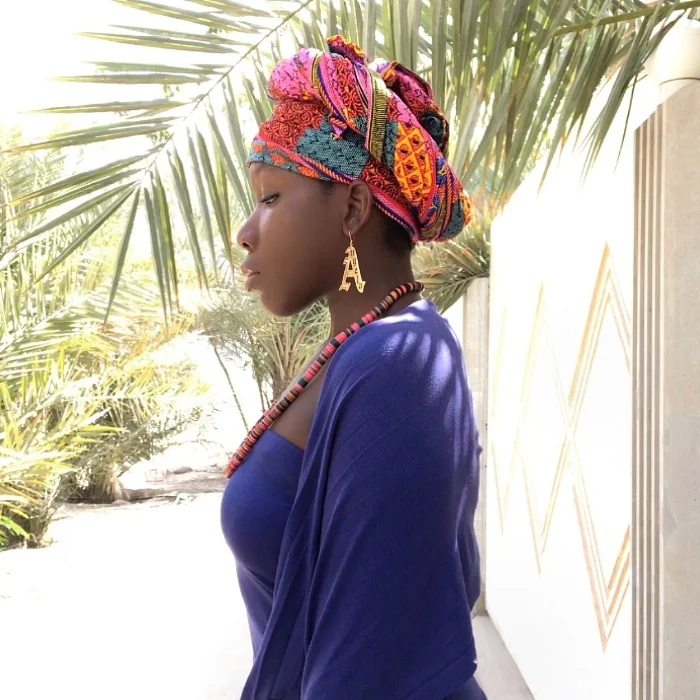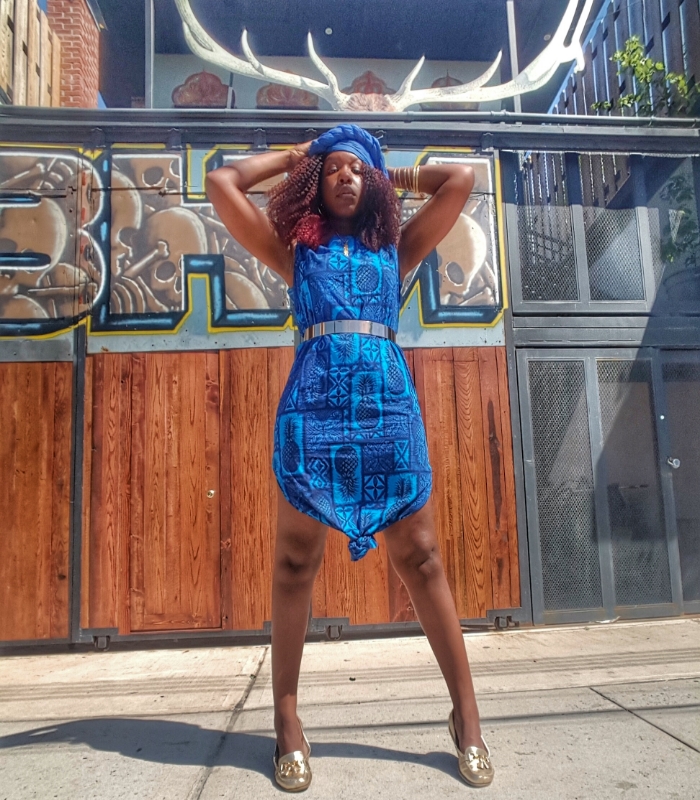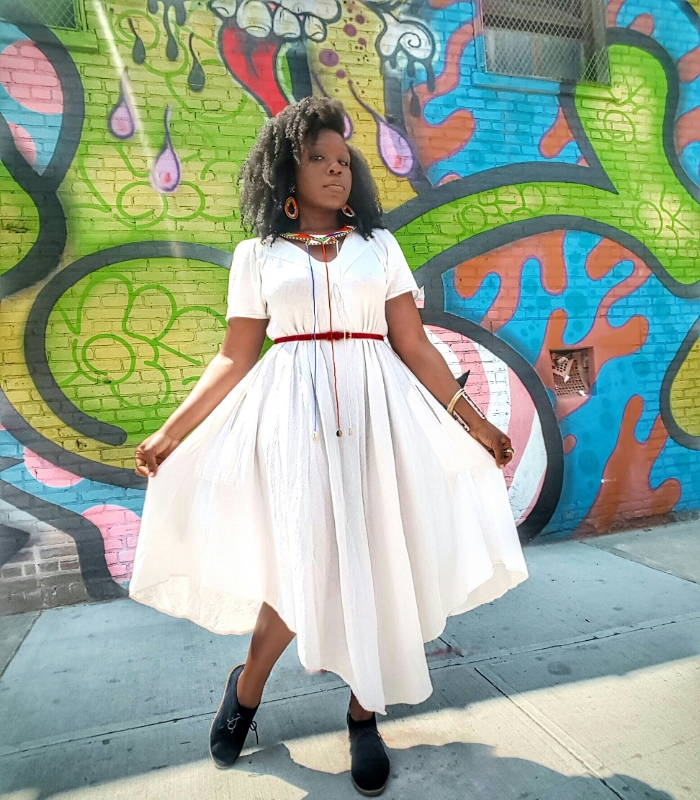In creating my 1st fashion collection back in 2015 for the Q.A.C. Webstore, my love of art and history came to the life when I had the chance to sit with an elder of the Dogon tribe. Found primarily in Mali, W. Africa, this tribe is known for their wooden masked dances, incredible architecture, and wooden artistic sculptures. However, they are most noted for their mud cloth fabric, often showcasing their ancient knowledge of the stars / universe.
Ghanaian Greetings
Anywho, in last week's Fashion Fix post, I talked about the need to wear modest clothing when in public spaces here in Qatar. That said, back when I was in the packing stage, I had the hard job of going through literally every item of clothing I owned and deciding whether it would make the cut and make it into my luggage ... Or end up in the trash / donation bin.
It was in this "toss it" or "take it" phase that I came across this beauty greeting me from the back of my closet. 100% West African wax print fabric ... Hand embroidered ... 20+ year old vintage dress straight from my dad home country of Ghana, West Africa.
Luxe Eco-Fashion: feat. JORD Watches
Hey culture lovers! This week on the “Daily Fashion Fix” I have a very special treat for you, so get excited : )]
As always, we know the foundation of quintessential Q.A.C style is the beautiful marriage between quality vintage pieces juxtaposed with amazing global selections … And this week, is no exception! Today’s look inspired by luxe style for the global and environmentally conscious, young creative. Like so many, as I grow into my own personal style and self-discovery, I’m moving away from trendy, “style of the moment” pieces and toward a more timeless aesthetic. Nothing’s worse than spending your hard-earned money on the coveted fast fashion “must haves” … Only to have it be deemed “out of fashion” the following season. Listen, I don’t know about you, but my coins are far too precious for that! … LOL! Instead, now more than ever, I’m all about investing in unique conversation pieces with longevity. My wardrobe consists of selections that not only lessen my impact on the environment, but also communicate my close connection to global culture. This week I chose a few select pieces from opposite ends of the globe, which highlight these concepts … Proving once again, that quality is always better than quantity.
First up? We take look at the beauty of African nation, The Congo as brought to us from JORD Watches. If you follow me on Instagram, then you might have seen my “Instagram Story” excitedly hinting at a mystery box recently arriving in the mail. As a West African girl myself, and an avid collector of global accessories, I was beyond excited to add this piece to the collection.
y loves? The classically understated navy watch face paired with the rich zebrawood stripped coloring of the wood. If you’ve been reading the Daily Fashion Fix for some time, then you’ll know that pairing of a solid statement color with an engaging print (be it subtle or bold) make for the perfect jumping off point when creating an amazing outfit using my “Color Pop Method.” Additionally, the simplicity of design also makes it easy to build upon if like me, you love accessories and a good arm party! Here, I paired my JORD watch with vintage bangles direct from India and an amber necklacefrom Gambia, W. Africa ... As you can see, I’m entering full eccentric fashion mode and I love it! LOL!
Last, but certainly not least … To know me, is to know that I’m a huge proponent of ethical and sustainable fashion. No amount of style is ever worth owning large amounts of clothing created from factory sweatshop labor or deriving from a company with a large environmental footprint. What I absolutely love and applaud JORD for is the transparency of sourcing. While the sustainability on my Frankie series Zebrawood watch could be a bit more on the eco-friendly side, several of the global wood materials used to create their luxury watches certainly are. Not only do they outline the country of the wood’s origin, but they also indicate the levels to which the tree / wood materials are considered “at risk.” In essence, you’re shopping pieces based on both personal style as well as your level of environmental comfort. Does your fashion fave do that?
Finally, as we head to Europe, Paris specifically, I decided to pair my accessories with this super chic vintage dress from none other than fashion house Lanvin! With a keen eye for vintage shopping, I was able to spot and snag this 50’s styled, A-lined dress from the luxury designer for under $100! ... An amazing deal, when considered many dresses from this designer can start at $1,000 each. In all, by shopping vintage and quality pieces, you’re incorporating pieces with longevity that you’ll literally have for years ... Ultimately reducing the pull on natural resources and impact on the environment ... All while looking amazingly unique in the process! And that always a great look!
Tap HERE to replicate this colorful luxe look!
ALSO? ... As a surprise this week .. *drumrolls* .. I’m partnering with JORD Watches and hosting a free giveaway for all of my Q.A.C fam! This one is for the ladies and the fellas and is just in time for the holidays ...
Tap HERE for details! on how to enter!
This post was sponsored by JORD Wood Watches ... Note: Opinions remain 100% my own. Thanks loves for stoping by! xo ~Angela
Share the Journey
Our Editor in Chief
Indigo Child
The thought of children being born with special gifts isn't a new concept. Cultures all over the globe have acknowledged and celebrated certain individuals or children with "gifts" throughout history. The origins of "Indigo Children" or "Star Children" is no different. Arising in the 1970's, the term has come to identify those with a special connection to psychic and spiritual abilities.
Those who are born with these gifts are often confident, intuitive, clairvoyant, creative, and at times reclusive ... preferring to be around other like minded sensitives.
To know me, is to know that I love all things mystical, spiritual, and otherwise "otherworldly". While there's much speculation as to how factual these indigo claims truly are, for me there's no question that the presence of spiritually inclined ... magically gifted individuals exist. I would even venture to say, I am one ... But that's a post for perhaps another day : ].
This week's fun ensemble is a tribute to my fellow mystics. Deep indigo dress (vintage) with double slits offers a fun way to play with styling .... While the gold accents on the dress, belt, and shoes, are present to represent the illumination of the stars. I also happen to be a fan of this dress for its patterning.
layful pineapples paired with the adinkra symbol of "Bese Saka" (symbolism of affluence) was a great and unexpected surprise as it incorporates both my tropical / caribbean and Ghanaian heritage. This dress is definitely a new fashion staple for my personal closet!
Share the Journey
Our Editor in Chief
La Santera
Anytime one attempts to talk about religion, there's always hesitation ... especially when the religion in question is one that has so many misconceptions surrounding it. This is undoubtably true when it comes to the practice of Santeria.
Born out of the devastating slave trade, Santeria originates from the large number of Yoruba (Nigerian tribal group) African survivors which ultimately were brought to Cuba and forced to practice Catholicism in leu of their own religion.
Being the survivors that they were, these Afro-descendants, while practicing the new Catholic religion also incorporated several aspects of their african spiritual traditions into the faith. From this co-mingling of traditional worship and colonialism emerged the practice of Santeria.
Within Santeria a peace is made where similarities within both faiths are found. African deities and Catholic saints are prayed to equally without conflict. Within this new community, new initiates, called "Iyawos" wear white and undergo a yearlong rites of passage filled with ceremonies, restrictions, new practices.
The act of wearing all white is a form of rebirth symbolizing purity, peace of mind, and spiritual clarity. Due to the unfavorable feelings at times for all things "Africano" on the island, particularly misunderstood religious practices and rituals from the continent, Santeria was not always welcomed and therefore continues to be practiced quietly within tight communities worldwide.
Like so many of african descent living within the diaspora, there comes a point where a merging of cultures occurs ... The clash of two worlds is never an easy one. In the case of the Santeros/as (Santeria practitioners) in Cuba, they were able to find a home under assimilation, untimely like so many others, creating a beautiful new aspect of their culture ... something uniquely their own.






